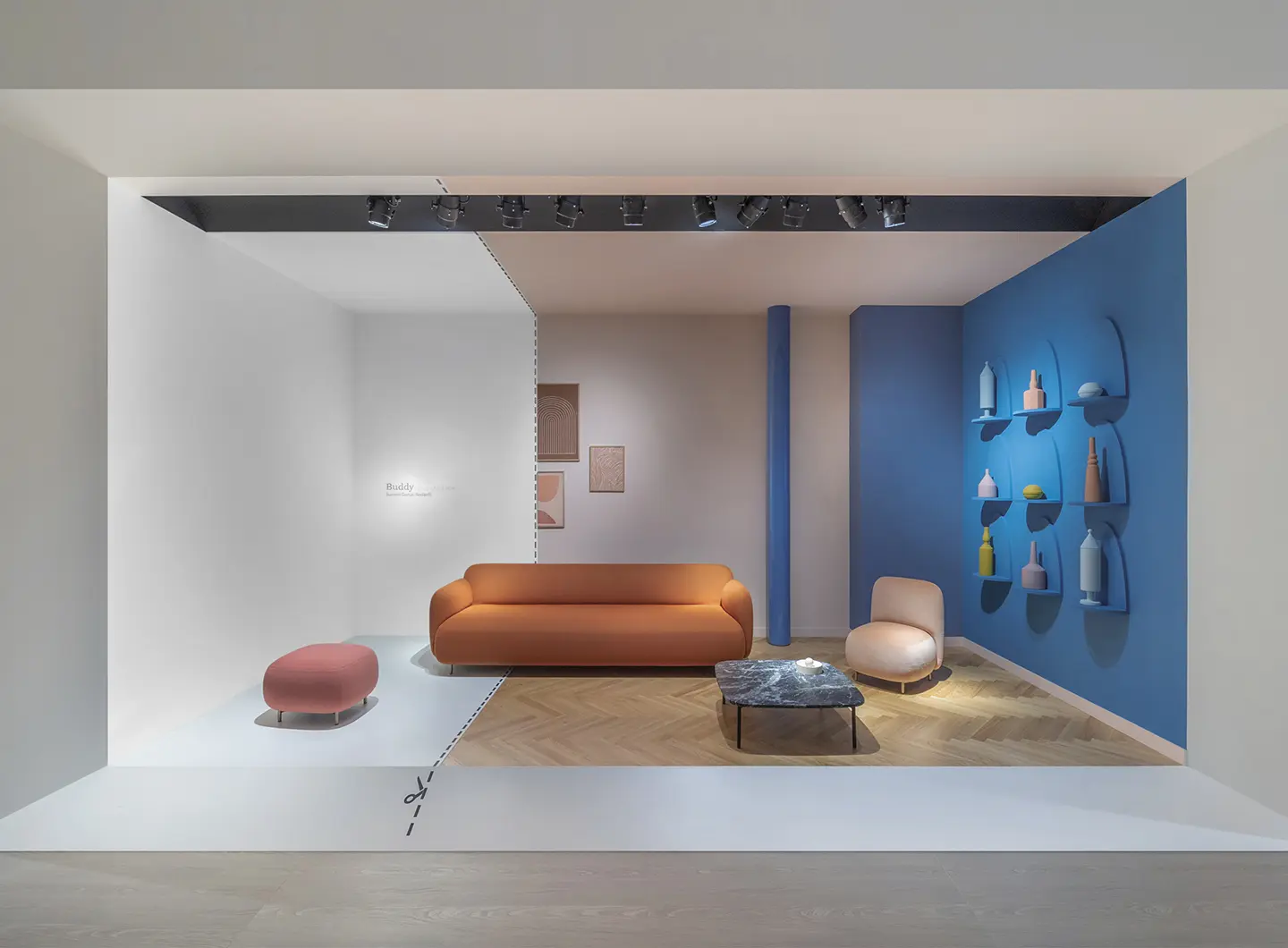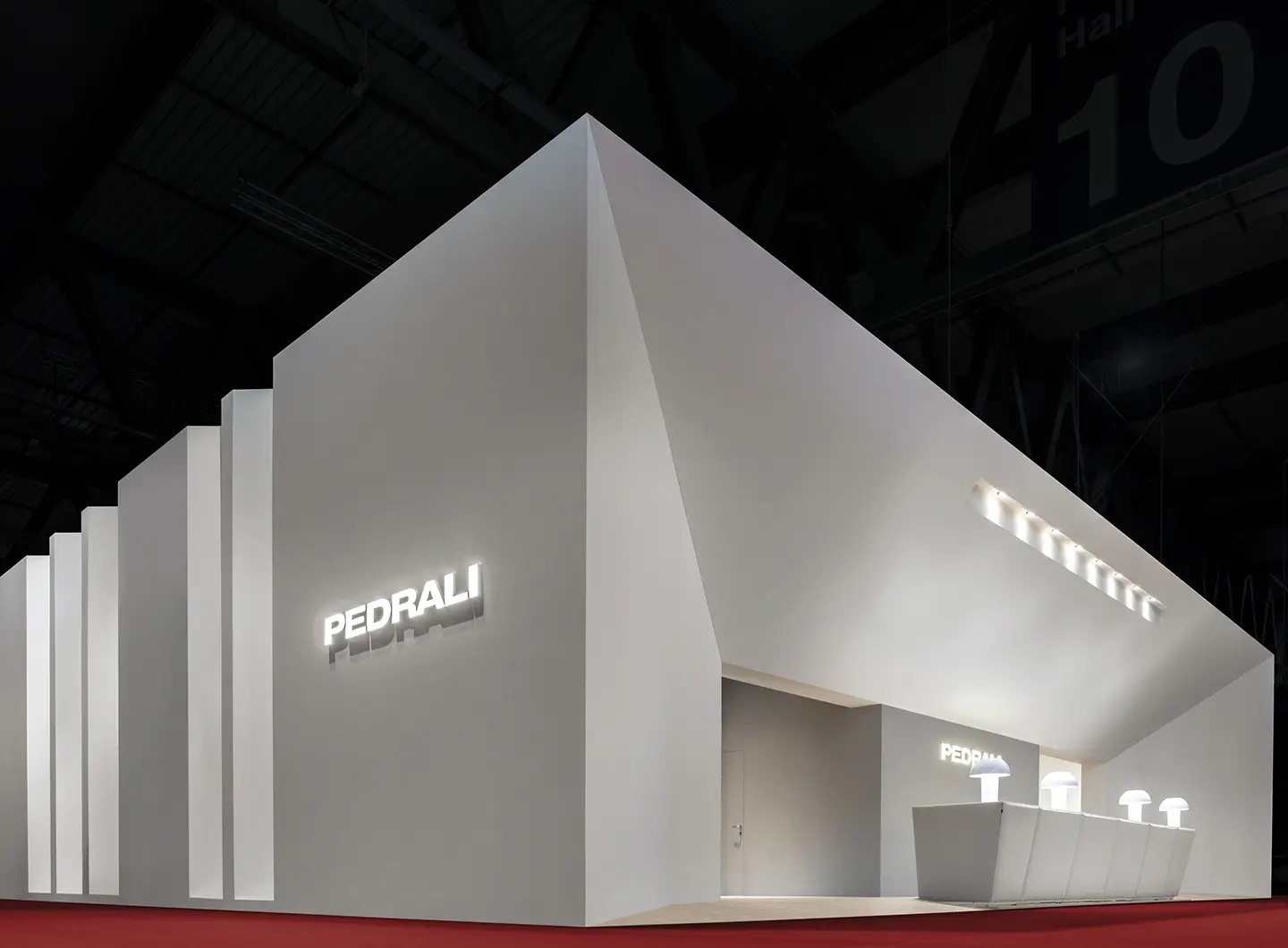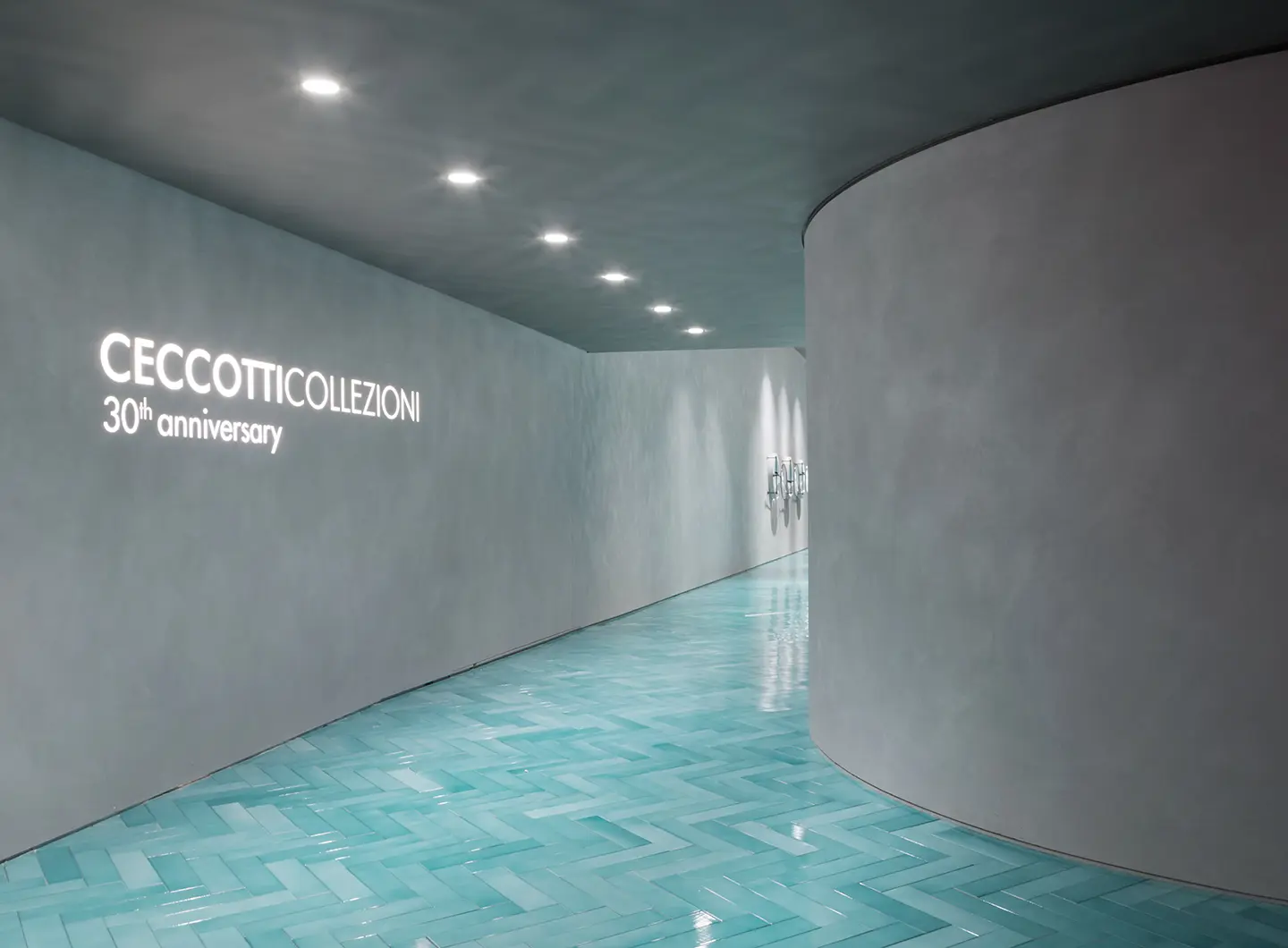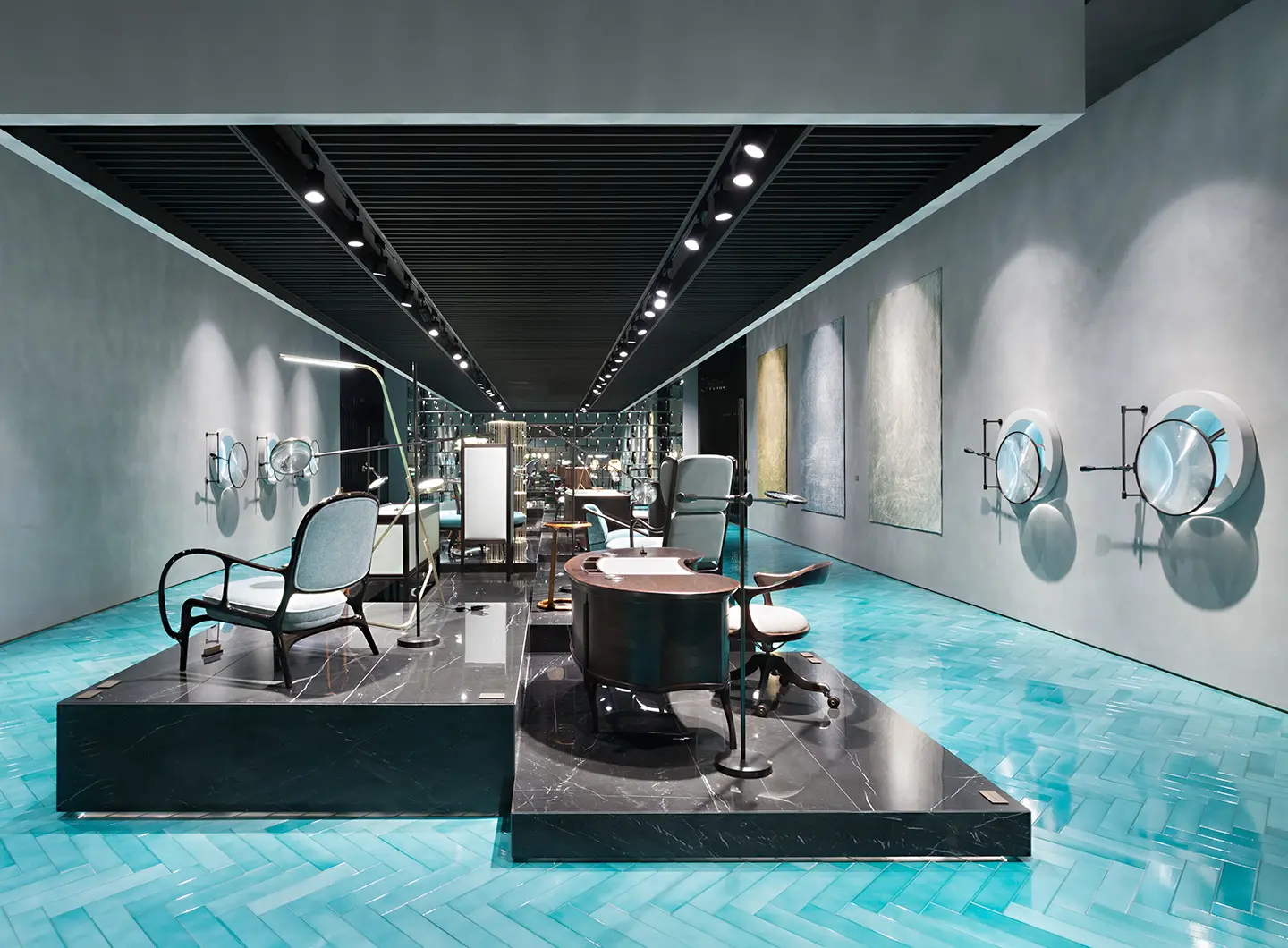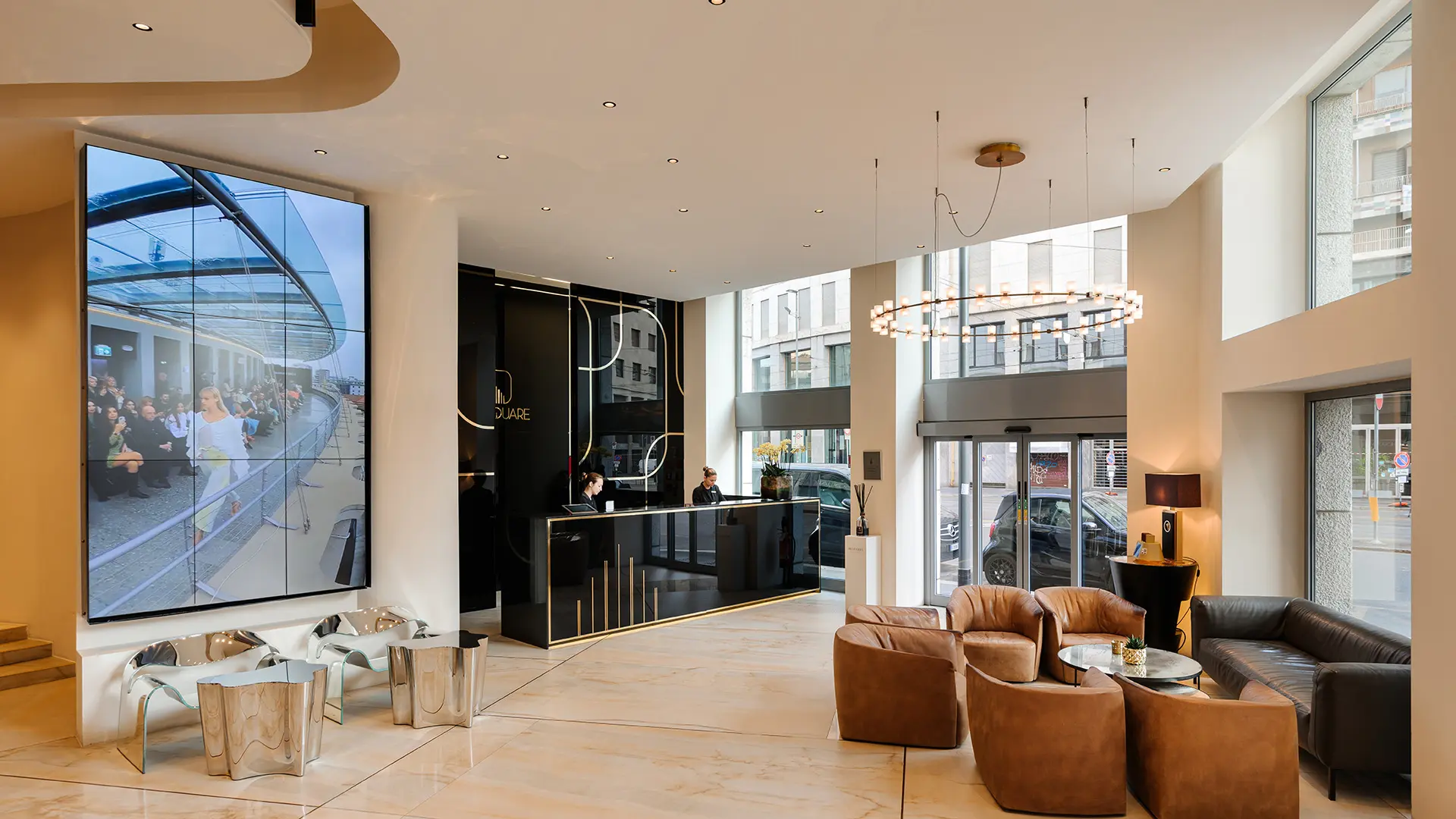In partnership with MiCodmc, a selection of establishments ripe for discovery during the 64th edition of the Salone del Mobile.Milano, from 21 to 26 April 2026
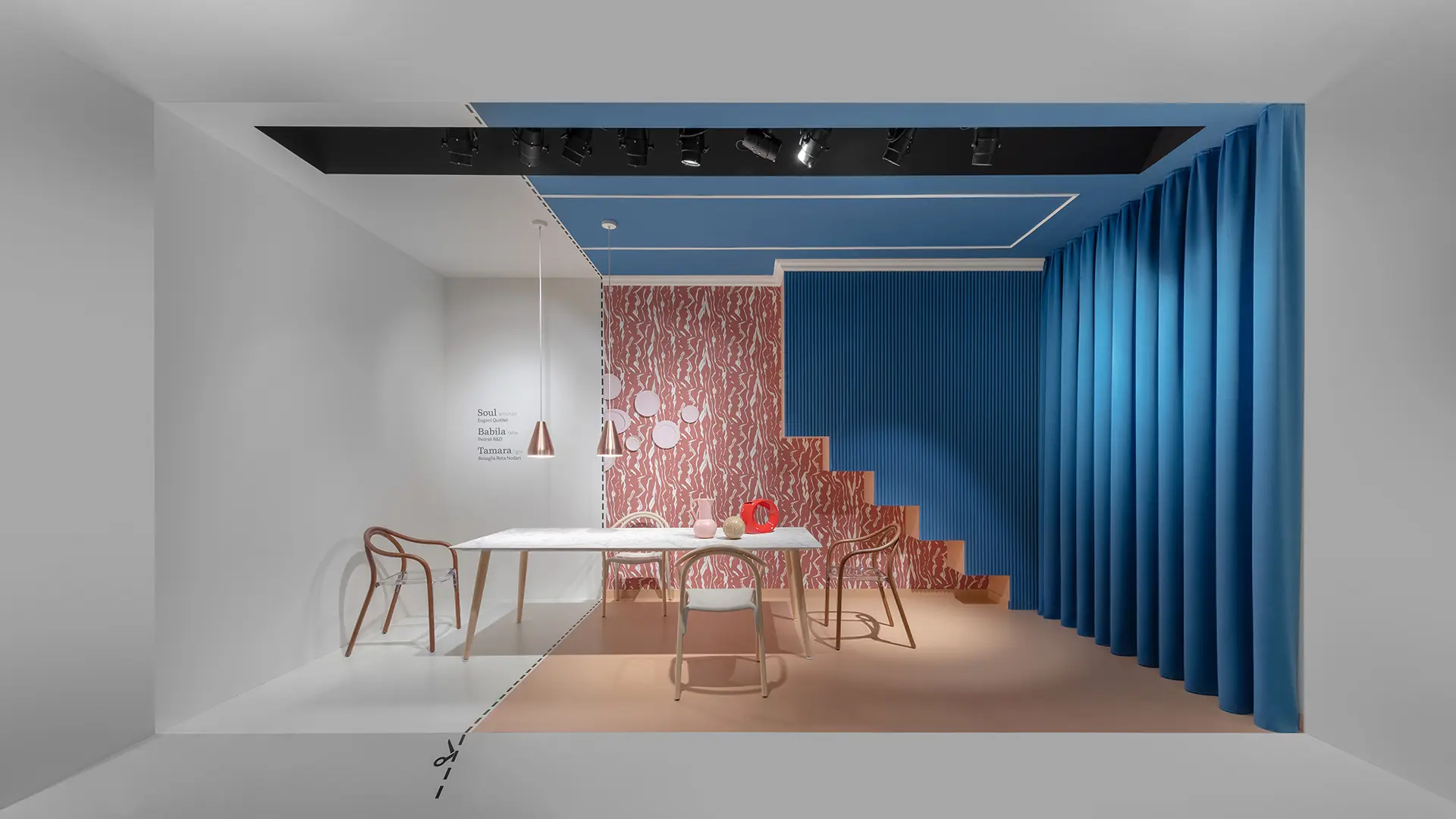
Pedrali, Palace of Wonders di Calvi Brambilla, photo courtesy
Starting from scratch every time, getting out of one’s comfort zone, being able to change perspective, following one’s intuitions and having the courage to turn them into design. A chat with Fabio Calvi
In order to have a unique, recognisable market identity, companies seek out visionary guides capable of creating their personality and building their image. The challenge is to come up with a just compromise between emulating a point of reference and honing a recognisable uniqueness.
Flos’s recent experience is totally different. The company doesn’t have an art director but a team that deals with various themes. We are responsible for coordinating the design, and we envisioned the Flos catalogue as a sort of art gallery. It brings together a number of identities and signatures, with a range of poetics and languages that inform models that are exclusive from the point of technological research and uniqueness. Our role is to ensure the ongoing development of this exceptional collection, but our decisions and our proposals are always shared and discussed with the CEO and with Marketing
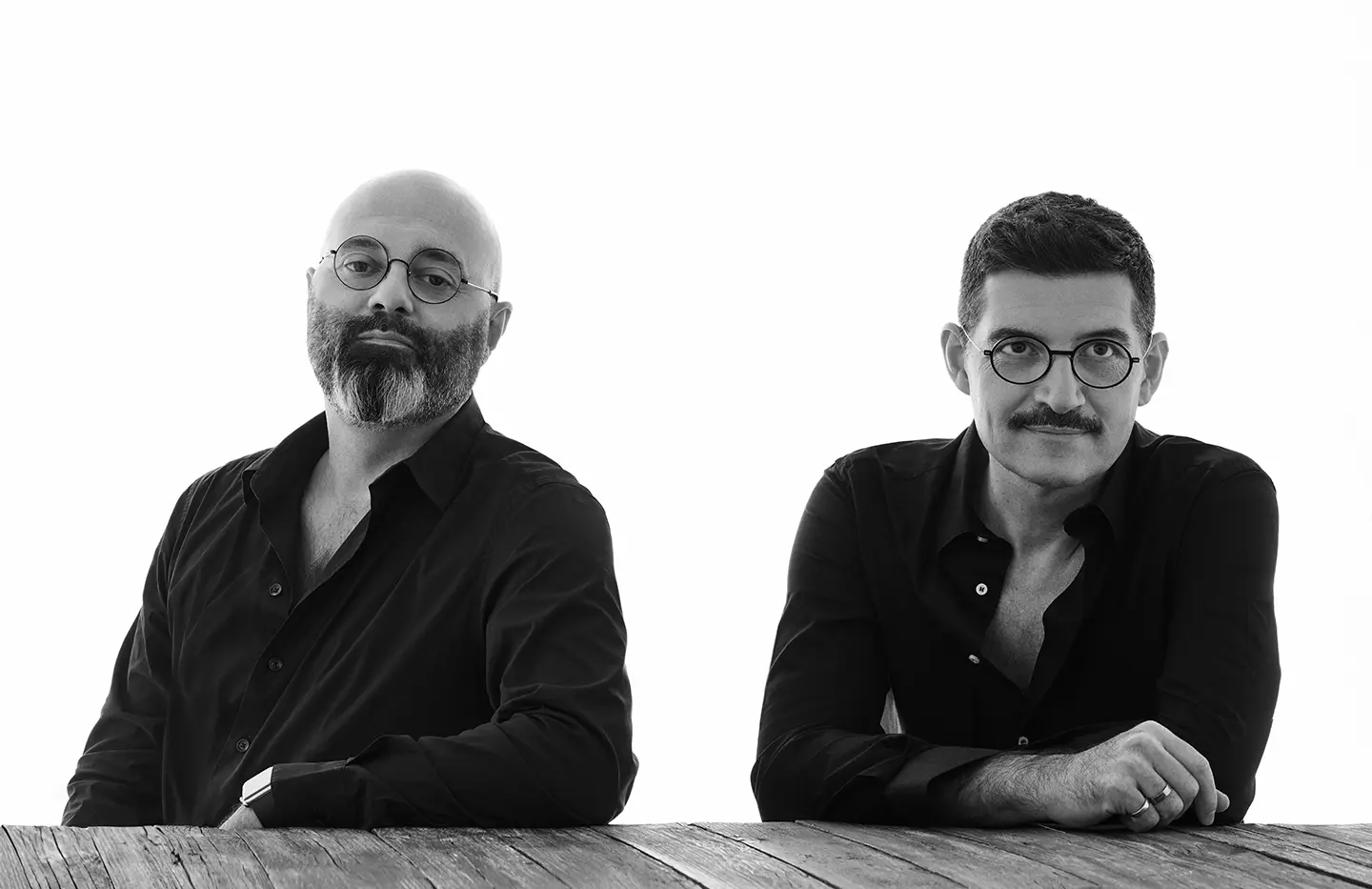
Calvi Brambilla, photo courtesy
It’s always the same: to create a strong personality with communicative appeal. To paraphrase my own source of inspiration, Castiglioni: trying, attempting, starting from scratch every time. This doesn’t just apply to art direction but to any kind of project. Getting out of one’s comfort zone is a challenge all architects should have to face. Even the smallest attempt to change one’s approach can trigger and create innovative responses.
Being curious, open also to dialogue with new professionals who are part of the creative process, can be stimulating. While communication was marginal during the 1990s, these days we start talking to whoever will communicate the project right from the off. For example, now they want extremely photogenic and “Instagrammable” displays!
There are lots, but the funniest concerns the stand for Franco Ceccotti in 2017, to celebrate the company’s 30th anniversary.
Franco wanted a museum-style atmosphere, so we designed a space inspired by the dystopian imagery of certain science-fiction films, such as Brazil, Hugo Cabret and Todo Modo by Elio Petri. We used some stunning hand-made Caltagirone ceramics for the floor. Unfortunately, we happened to notice during the preparatory phase of the display that the workers liked them a lot … entire pallets would disappear! Two days before the fair opened, we realised that we didn’t have enough products. We managed to get them flown over post haste and laid them while they were still warm!
When the big day came, the visitors (with their trolley bags) started to arrive, and some of the tiles started to break … then I had a brainwave. Basically, I took some photos of the tiles with my mobile phone and sent them to the studio, where they were reproduced, cut and sent to the graphic designer, who printed some shiny stickers of the tiles to scale. I stuck them right onto the tiles and nobody noticed, not even Franco Ceccotti. It was a speedy solution at zero expense, because this sort of thing happens with displays.
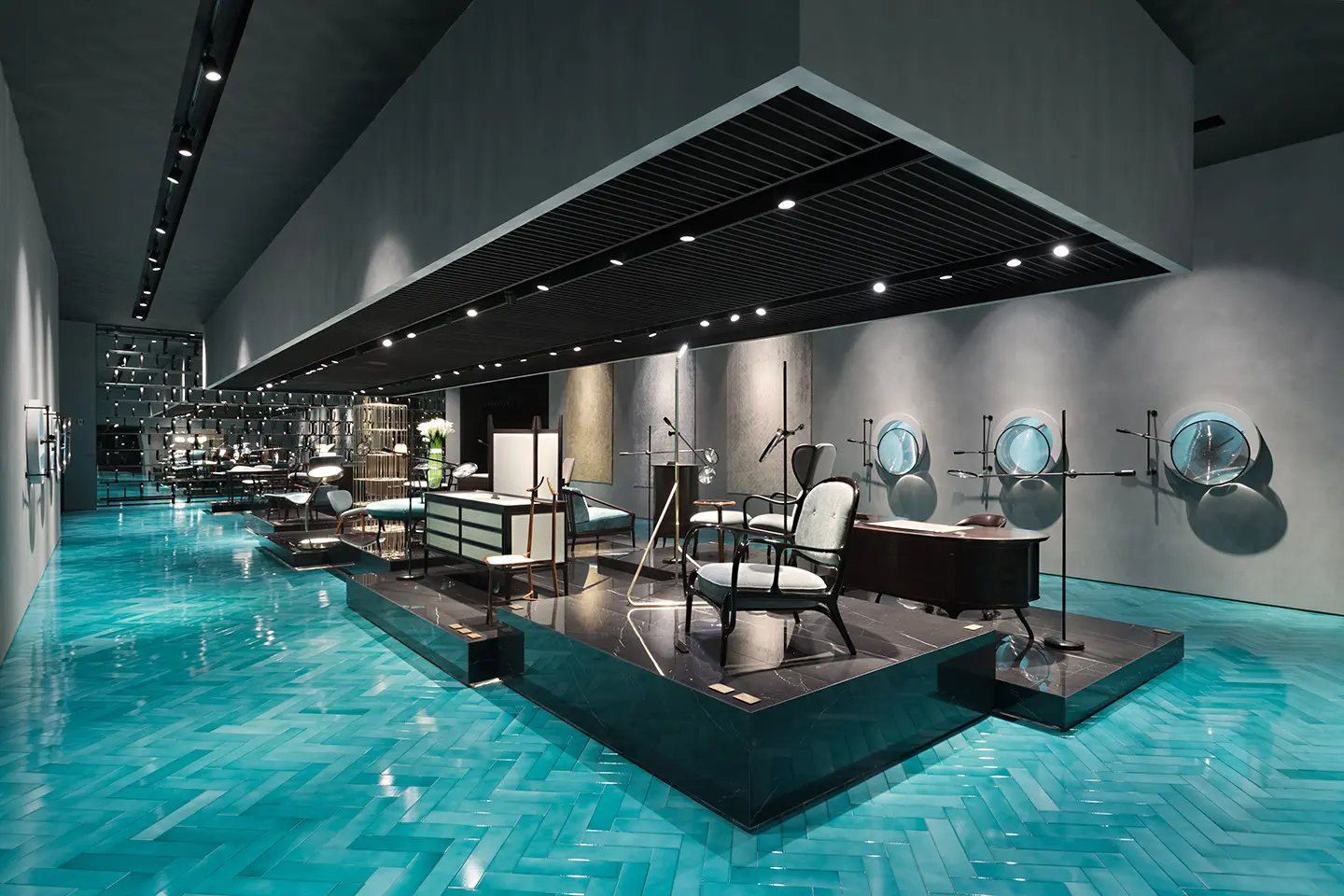
Ceccotti, Salone del Mobile 2018, photo courtesy Calvi Brambilla
We’ve never been particularly hot on public relations, clients often come by word of mouth. Our great break came in 2015 when Gilda Bojardi invited us to take part in the LC competition for the 50th anniversary of the Le Corbusier collection curated by Cassina. Our project was selected and the “moving” window display was produced. Working with challenges and different sorts of products gave us an opportunity to experiment. The Cassina award was very gratifying, a leap forward.
We met the Pedrali family at the same time, for whom we’ve designed a lot of installations, the company showroom and the one in Chicago last year. Monica and Giuseppe Pedrali are real entrepreneurs who allow their consultants a lot of creative leeway, checking every aspect of the project with a healthy measure of trust in our ideas.
Creativity doesn’t happen just like that, you have to learn to manage and pick up on your intuitions, have the courage to turn them into projects. That’s why it’s crucial that there are two of us. Theoretically I’m the more creative of the two – but not always! We balance each other out. The intuitions are then filtered through what is often a rather “intense” discussion. Our first collection for Flos will be presented this year.
Home furnishing companies have done really well over the last two years but now that we may be able to start travelling again, the contract sector, which had ground to a halt, will get going again.
As always, it’s hard to predict what the future holds, but I’m sure it will be an evolution of many things that already exist. It’s right to try and to experiment. For us it’s a complex job that entails a great deal more than just designing spaces. We’re asked for strategies more often than walls.

A Matter of Salone: the new Salone communication campaign
From a reflection on humans to matter as meaning: the new Salone communication campaign explores the physical and symbolic origins of design, a visual narration made up of different perspectives, united by a common idea of transformation and genesis



 Stories
Stories
